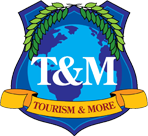Health and Wellness Tourism
March 2010
The graying of populations in many of the more advanced parts of the world, along with shorter hospital stays have created multiple new tourism health, wellness and recovery opportunities around the world. Often called medical tourism, this form of travel has existed since the beginning of written records. People in the developed nations may travel to less developed nations that offer top-flight medical facilities as a way to combine health care and a vacation. Others from less medically advanced regions or countries may travel to more medically advanced locales to seek treatment not available at home. Some nations such as: Brazil, India Israel, Malaysia, and Thailand have developed niche market medical tourism centers. Furthermore, the level of medical care given in a nation may not be related to that nation’s economy. For example, medical-centers in developing nations often offer private health care services that use the most up-to-date health care methods and technologies. Many of these clinics offer well educated doctors trained in the best North American and European medical centers.
There is no one formula to help a community decide if medical tourism is correct for it. Some communities have interconnected their local hospitals with other tourism facilities to offer medical tourism packages. Others simply promote good medical prices, good weather conditions, or excellent recuperation facilities. Medical tourism can be regional or international, based on long-range needs or short-range time frames. To help you decide if medical tourism is a good idea for your locale consider some of the following ideas:
- Know what you have. Good medical tourism begins with a good community resource check-up. What medical facilities does your community offer? What types of doctors and recuperation facilities do you have? What languages are spoken in your community? How does your climate impact your health-care abilities? How quickly can you get someone from a local airport to a local hospital or hospice center? How well are your ambulances coordinated with your tourism industry?
- Make sure that your customer service is topnotch. Visitors who come for medical treatment need extra amounts of love and care, understanding and compassion. Lack of good customer service cannot only harm a nascent medical industry but also destroy it. To assure the best medical tourism customer service, take the time to train people not only in generalized customer service but also in the special needs that a patient may have due to a particular disease. Also take into account that family and friends of patients coming for medical treatment will also need a higher degree of customer service than is often provided.
- Make sure that your community understands the goals of medical tourism. Often medical tourism fails because the members of the community do not understand its goals and benefits. Locals may have misperceptions of what it means to bring people in need of medical attention into their community, they may not understand that they too play a role in the success of the program, or may resent the fact that their local doctor is now seeing out-of-town patients. Be sure to provide accurate cost-benefit information and work with your community rather than imposing a new model onto it.
- Determine why someone might come to your locale. There are a number of reasons why people travel to other places for medical treatment. Among these are: people may choose to go to another location due to lower costs, they may seek services not available in their home location, they may need to travel to a different location due to denial of services in a managed care or nationalized heath care program, they may seek to combine rest and relaxation with a medical procedure, and/or they may be seeking privacy. In order to develop a good medical tourism program it is essential to determine what drives your portion of the market and which of the above reasons may apply to your segment of the medical tourism market.
- Check out what others are doing. This is the time to peruse the web to see what other communities are offering. Even a brief time on the web will demonstrate the wide range of medical travel offerings, from dental care to cosmetic surgery, from heart surgery to centers that specialize in specific diseases.
- Create recovery packages. For example, does your community offer places where weight loss can occur? Do you have centers where people can go for alcohol treatment? Often communities have more facilities than they realize but have never combined them in one simple tourism package? Develop alternative activities for people between treatment periods or for their family and friends who may be accompanying them during treatment. Work with restaurants, social services centers, religious communities and others who can help you combine a total recovery package. Often smaller communities offer out-of-the way destinations where people can go for treatment and not be bothered by urban temptations.
- Develop wellness centers. Nations such as Switzerland have long understood the potential for spas and other wellness centers. Medical tourism is not only about curing people who are sick but also helping people to stay well. As such consider combining sports tourism with medical tourism. Develop wellness programs that incorporate your medical and athletic facilities with your community’s psychological facilities, its cultural institutions and its food providers. These total packages offer health benefits to visitors and a new infusion of financial health into the local economy.
- Simplify your medical tourism package as much as possible. For example, South Korea is developing an island dedicated to medical tourism. That country has also opened one-stop service centers for medical travelers. These centers offer information booths and medical information website in five languages. Even small town communities can create one-stop medical tourism brochures that provide ideas as to what to do, where to go and to whom to turn for help.
One of the interesting parts of the health and wellness tourism market is that if thought out properly almost any community can benefit from at least a part of this growing trend. The current economic downturn means that tourism industries will need to seek new and innovative tourism products and medical tourism may be one such product. Governments’ control of medicine may be another reason why people will seek medical help while combining travel and health.



